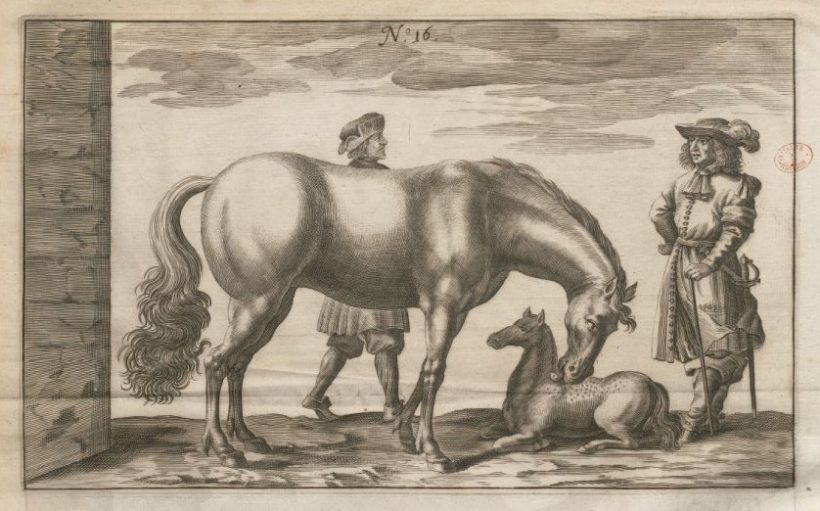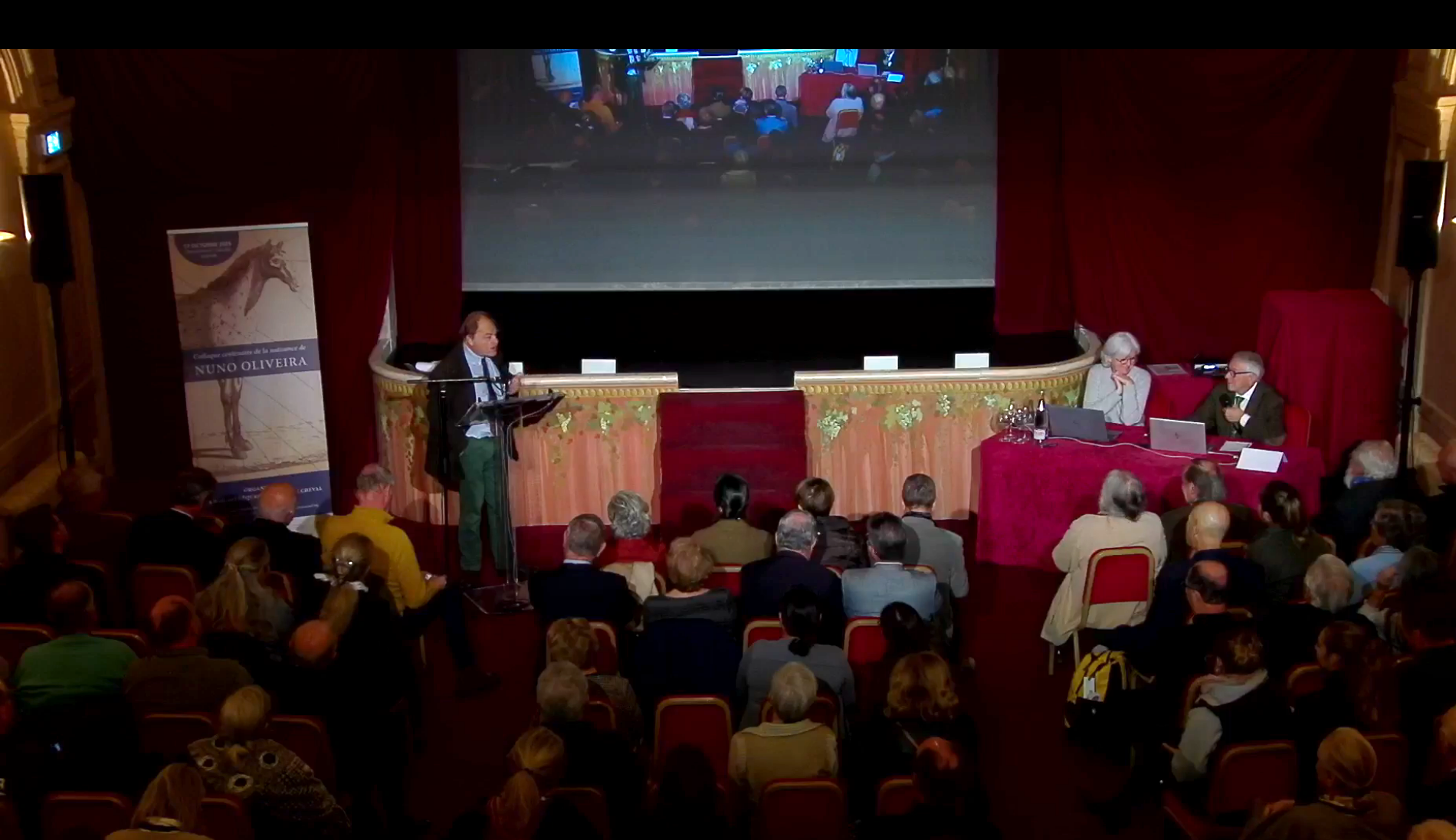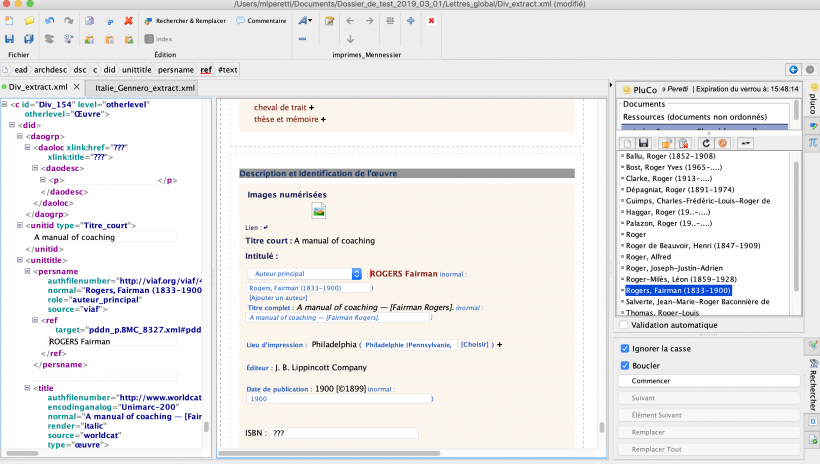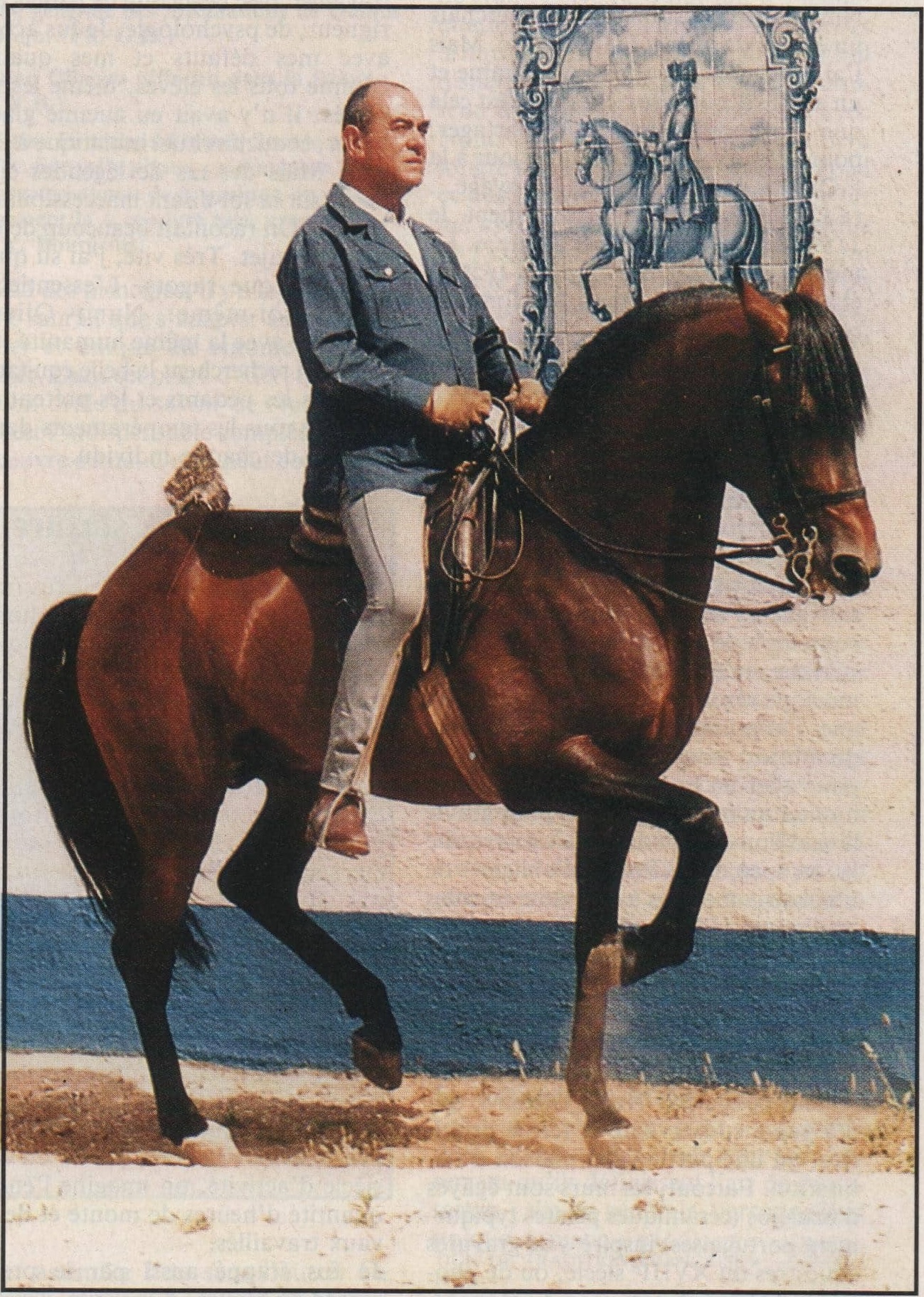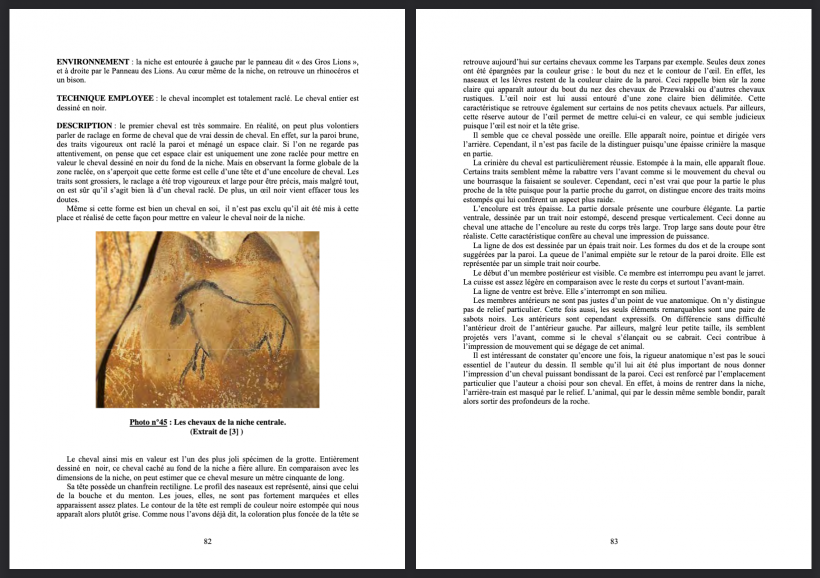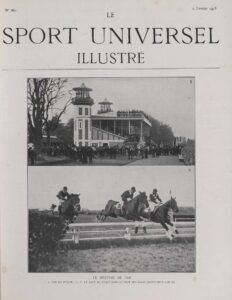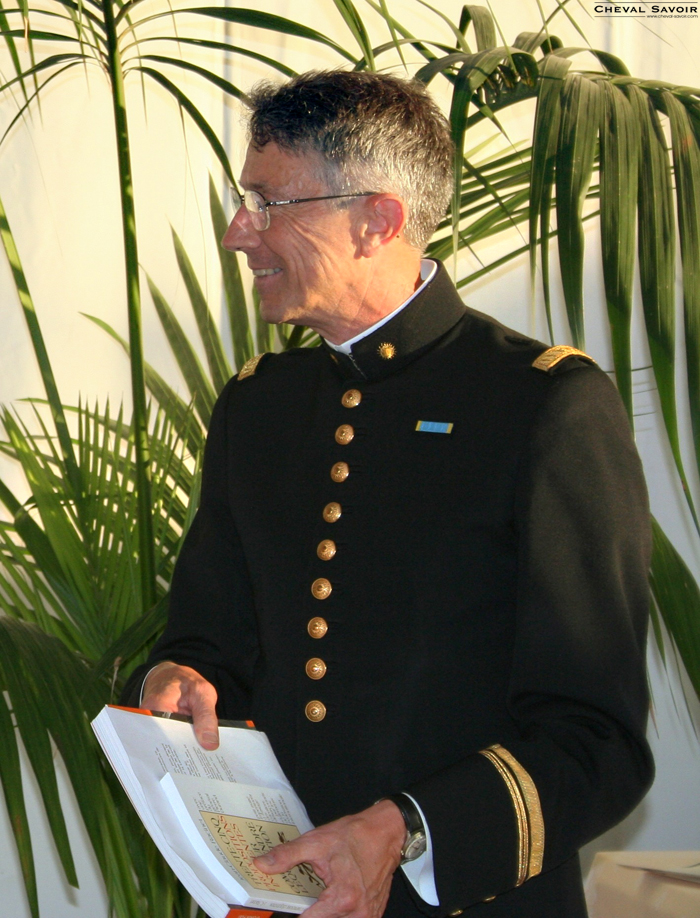
Alliance with the IFCE, an approach to the service of knowledge
Jean Roch Gaillet, director of the IFCE (French Horse and Riding Institute) on March 19 ratified a partnership agreement with The World Horse Library, which was born at the end of 2018. As indispensible as evident for both parties, through the libraries of Saumur (horse riding) and Pino (breeding), under the responsibility of Bernard Maurel, these horseback riding fundamentals deserve to be better understood and valued.
Patrice Franchet d’Esperey, squire, author ( The Hand of the Master , Odile Jacob, 2008) and expert bibliophile contributed greatly to the “making” of the so-called Saumur Library. So, naturally, we interviewed him to find out what he thought about this approach. And, in short, what was discovered in this exclusive interview is the complete story of what we call “the Saumur Library”.
XL – Patrice Franchet de Esperey. What does this approach mean to you?
PFE – Dear Xavier, what I understand from the explanations you have given me in this regard, I believe that this association has three main objectives:
-
To promote, in relation to Saumur, the four libraries dedicated to horses and horse riding, which consist of the Black Frame Library of Saumur, the Cavalry School, the Castle/Museum of Saumur, and those of the National Stables;
-
Make the catalogs of these libraries available to the general public;
-
Allow the search of more than one thousand digitized documents on horses and riding.
My first reaction is to applaud the initiative of the World Horse Library, which takes, for lack of a better word, the relief of a long-term project that I carried out for many years and that deserves and deserved that the Institute today has it in its power, to restore its full potential and true value.
Also, this association is evidence that the IFCE has become aware of this unique heritage that it has in its possession and decided to make it available to as many people as possible.
The relief proposed by the World Horse Library revives the dynamics we had proposed. It is safe to bet on the possibility that this great project will have the effect of a safeguard for the IFCE collections. I would almost call this project innovative.
– Could you explain this a little more?
Before answering, I toured the IFCE website and noticed the disappearance of the Documentation Center of the National Riding School and, therefore, of the great documentary wealth it contained; this is the current procedure: books scanned on the IFCE website can be found under “Knowledge”> Media Library > Unique findings. Then you must specify a title, author, and only then, one may have the opportunity to benefit from a link to Gallica, to see the work through the BNF digitization tool, which we have been working with a lot…
All this to ensure them that my support and my skills fully back this project and all of those who support it.
In fact, you have worked for many years in the constitution of the National Riding School fund. How much time exactly?
I worked at the National Riding School between 1989 and 2013, 24 years. My career was atypical. I entered the School a little by force and became a rider thanks to Hubert Comis, for the services provided to Cadre Noir in fulfillment of the missions entrusted to me.
The specific work of the jump is unknown to me. At that time I was a technical stunt advisor for Ms. Theullier at the French Riding Federation. It was the time of President Charry, who was later replaced by President Brousse. A part of his team was fired and I found myself in the situation of receiving a pay without the need to work, which does not go with me.
Colonel Carde made several horses available to me, but since his cavalry was somewhat limited, he suggested to the director of the school, Jean-Luc Lehmann, that he nominated me to take care of the library part- time, which had already been closed for some time.
The colonel knew the work I had done in equestrian literature with my teacher and mentor René Bacharach. The library of the National Riding School had been founded by Mrs. Boucher, widow of Colonel Boucher, Chief of Squires, starting with a bookcase selected by Colonel de Saint-André in the library of the Saumur Cavalry School. This shelf was in the offices above the stables of Cadre Noir, in front of the old squire carousel.
Madame Boucher had developed a classification plan that I maintained, and to which I made just a few modifications. This order is based on the summary of the Federation’s Horse-Riding Manual , which came to be a copy of the Dressage and Horse-Riding Manual possibly written by Colonel Blaque-Belair in 1912.
The most remarkable work done by Ms. Boucher was the establishment of a paper file that included all of the books on the horse and riding at the Cavalry School, from the castle-museum of Saumur and of the National Riding School, including its topographical situation. After that, I added the three search catalogs on to the website at the documentation center of the National School of Riding. My first job was to update the paper file. This task lasted several years, since my department was the last one at the school to receive computer equipment.
As soon as the computers arrived, we had to redo all the bibliographic records of the paper files, integrate the newspaper collections and fill in the gaps. During that time, we had to make the bibliographic records for new acquisitions, and my policy consisted in buying all of the novelties each year.
If digitalization was the first big step, the second was the reconstruction of the administrative building, which gave the library a wonderful space. They commissioned an architect/designer to learn about the different characteristics of the future building. His interview with me was of good quality and I told him that it would be ideal if the library could be located in the center of the school, at an equidistant distance from the different buildings. As an anecdote, I’ll tell you that during an internal administrative council with all the school officials, the principal made the following comment: “Can you believe what Mr. Franchet d’Esperey told the architect/designer? That He was the center of the school!” I admit that, even after so many years, this comment still amuses me greatly.
The next big step was the interior design, a decision that was in charge of Hubert Comis. He wanted an old-style library, re designed by a contemporary interior designer. Successful bet: this library is worthy of the cultural challenge represented by Cadre Noir. The glass catwalk leading to the entrance and the almost cubic volume, makes me think of the movie “The Name of the Rose”, in which the dungeon of the monastery contains a single book, The treatise on laughter by Aristotle , whose secret must be kept, even at the cost of human lives.
Since the year 2000, I started organizing seminars; a dozen so far, whose records I have published. And in 2010 we entered a new stage: a student from the university center came to the library to ask me how to check the catalog on the Internet; which was not possible at that time. The student’s name was François-Xavier Bigo. He proposed creating a website as part of an internship he had to do to get his professional license for “Riding management and marketing”. Therefore, the website was developed unfunded and it only cost the amount of a legal salary. Who in the IFCE could have done better?
The website is rapidly enriched with museums pieces of the base of the Mona Lisa Foundation, etc. Then came a two-step digitization campaign, with the four funds mentioned above. In 2011, the company Northern Archives was able to make a selection of 120 antique books, thanks to a grant from the Ministry of Culture that went through the City Hall of Saumur since the only eligible party was the Castle-museum of Saumur.
The following year, we worked in partnership with the National Library of France in documents dating from 1810 to 1935. At that time, 199.577 pages corresponding to 66 documents of the National Cavalry, 361 of the National School of Riding, 586 of the Cavalry School and 130 of the Castle-Museum, a total of 1.143 documents, including the Journal of Cavalry and Universal Illustrated Sports were digitized. At the same time, François-Xavier Bigo was dedicated to the preparation of the synopsis with a team of interns, who created a portal of digitized books where there were 1.714 documents available for consultation.
At the same time, the director Jacques Thiollat commissioned me to prepare the file for an inscription to the intangible cultural heritage of Humanity, whose vicissitudes lasted three years and came into effect in November 2011. But that’s another story… quite complicated.
How and in what context did this mission begin and was carried out? What means were available (technical, financial, human)?
I had many financial means, thanks to Hubert Comis and Philippe de Guénin, the first director of the IFCE, who protected me from evident ambitions and freed me from the vertical hierarchies. Because of Christian Cambo, I was assigned a budget for the purchase of antique books. The first purchase was the paper edition of “ T he Cavalry School ” from La Guérinière, that Philippe Deblaise brought me, who was only starting his career as a bookseller. We called Christian Cambo, who while admiring the work asked about the price, which was 3500 francs. Given this figure, I saw him lean back, as if the book had burned him. However, he ended up buying it.
Another memory is the sale of part of the library of General L’Hotte, sold by one of his granddaughter’s nieces. A nephew had offered it to me for the price of the appraisal, which was 24.000 €. I made the request and a few months later the school Administration approved the purchase. Meanwhile, the library had been released for sale at an auction in Nancy. I went to the auction with the budget established by the appraisal. I prepared the operation with an old bookseller friend, specialist in incunabula and books of the 16th century. At international sales sites such as Marelibri, we established the maximum price that could be offered for each book, from a list of the ones I had chosen. I managed to obtain the preferential right in the name of the State. The representative of the Ministry of Culture was sitting next to me and I gave him green light to acquire each of the chosen books. As usual, the books came out for a lower price than I had calculated. Therefore, I was able to buy many more books; in particular, the Atlas of the “ Treaty of Cavalry ” from General Drummond of Melfort. It is unusual that several preferential rights present themselves in the same auction, for which those present laughingly began chanting “preemption, preemption…” every time that we adjudicated an acquisition. In this lot, I was able to take the edition of the “ Complete Works ” by François Baucher, with dedication to General L’Hotte. This is the edition in which the general participated in greatly, especially in the elaboration of the second edition, as his correspondence would later reveal. The purchase of a 1625 edition of “ The King’s Instruction in the Exercise of Riding ” by Antoine de Pluvinel was also made, beautiful, certainly an first print evidenced by the perfection of the engravings. This book returned from the United States. My policy was to buy prestigious books for a library as prestigious as Cadre Noir, and not a multitude of books within reach of almost every pocket.
– What was the main objective?
To make sure Riding and the Cadre Noir are part of the Ministry of Culture. It is a reality from the inscription to the intangible cultural heritage of Humanity, which stipulates “cultural” goods. I owe a big thank you to Pascal Lièvaux, who currently heads the department of research management at the Ministry of Culture, whom I met when he was teaching History of Architecture and Gardens at the University of Tours. He participated in the first conference I organized in Saumur about François Robichon de La Guérinière , squire of the king and today , in 2000; then, together we organized a conference on horse architecture, etc.
And the result: ¿Quantitatively and qualitatively? What are the bottom pieces of the IFCE that you find the most interesting? Exceptional or rare? Unexpected or original?
I will only talk about the National Riding School. Two bronzes that the Romanian-born sculptor Virgilio had done and that can be seen in the documentation center of the National Riding School: The inner shoulder , on the occasion of the conference on La Guérinière and Pluvinel and the pillars.
– The best “deal”?
The manuscripts of the commander of Novital, chief of squires, who reported the day-to-day practices of the Baucher method in the Army in Paris and Saumur. This purchase was a true saga. A man, a scrap metal dealer and a fur merchant, came to offer me the manuscripts for the School. He gave them to me to keep on deposit at the library (for precaution), in hopes that funding would be approved, which was a considerable sum. An old bookseller friend helped me with insurance issues and even signed a document taking care of them. In the end, it was not possible to collect the money. Hubert Comis did not believe that the manuscripts were of great interest. Months passed, the seller became impatient, he sent letters, lawyers, and the whole system was launched. Finally, one day in front of the administrative building, Hubert Comis introduced me to a person from the Ministry of Sports to who told him I was making purchases without any purchase orders, which in his opinion was unacceptable. I told him which documents it was in reference to and the man hardly found any words to say how sensational these document were, etc., etc. That’s how I obtained the money and the director never found out about the seller’s crazy attempts to make the sale. Once the decision was made, we achieved financing for the purchase of antique books to be made each year.
Another anecdote: Hubert Comis asked me to present the rare books to a director of a large insurance company that organized a private gala of the Cadre Noir in a Bordeaux vineyard. I replied that if he gave me one hundred thousand euros, he could have in its place one of the most beautiful of equestrian themed libraries. Upon leaving the library, this man gave us a donation of 20,000€.
– The most difficult?
The Novital manuscripts due to the impossibility of obtaining the purchase order and the credit for it.
– Which one are you most proud of?
Antoine de Pluvinel
– How is this cultural capital organized and distributed?
It would be better to speak about the assets since that we would have to go to four different institutions, even if the IFCE now includes National Cavalries and the National Riding School. This distinction best reflects documentary realities. The Cavalry School library was moved from the central building to the last part of the old stables of the Cadre Noir, the one near the Loire. The Castle- museum is located in one of the castle towers. The assets of National Cavalry were mixed; each institution had its own library, the most beautiful one being the Du Pin Stables. A general catalog had been established under the direction of Nicole de Blomac. So there were many duplicates, triplicates, etc. With this last catalog, I made the selection for the digitization to be carried out by Gallica. Once my list was established, I discovered the one she had established. My selection was good, but hers was much larger; Therefore, the latter is the one that has served as a final selection, her knowledge of breeding is much more complete than mine, which is quite rudimentary. At the time of the grouping of the ENE-HN in the IFCE, I went to Pin and found the library in cardboard boxes under the roof of the castle. Their condition seemed satisfactory. The copies had been moved from the library, as they needed the facilities for other purposes.
Who currently manages the assets of the IFCE?
Currently, it is my former collaborator Brigitte Dupont, under the direction of my direct successor, Bernard Maurel, former director of the Stables. He has an exceptional knowledge of the collection since he began writing bibliographic records in the 2000’s, and in particular those of all equestrian magazine collections since its inception.
Bernard Maurel retired and will not be replaced. Brigitte Dupont is equally close to retirement. I hope her replacement will have some of her great virtues, because I can bet that there will be no “chance for real connection”.
What do you expect from this association?
Unification of the databases;
Contribution to the development of the portal of digitized documents;
Collaboration for the promotion of the portal.
What do you expect from The World Horse Library?
That it perpetuates and develops, with all the financial, computer, and intellectual skills they possess in the fields of human sciences and information technology, greater scale, that it wont be just a virtual library, but also a place to consult catalogs in acceptable forms and procedures for all fans.
I have faith in the university, whose origins date back to Medieval times and have given proof of longevity, so that tomorrow it may shed light about what is hidden today, in Saumur, under the generic term of “Knowledge”.
Interview conducted by Xavier Libbrecht
Articles IFCE (French Institute of Horse and Riding Sciences) Headlines funds partnership
